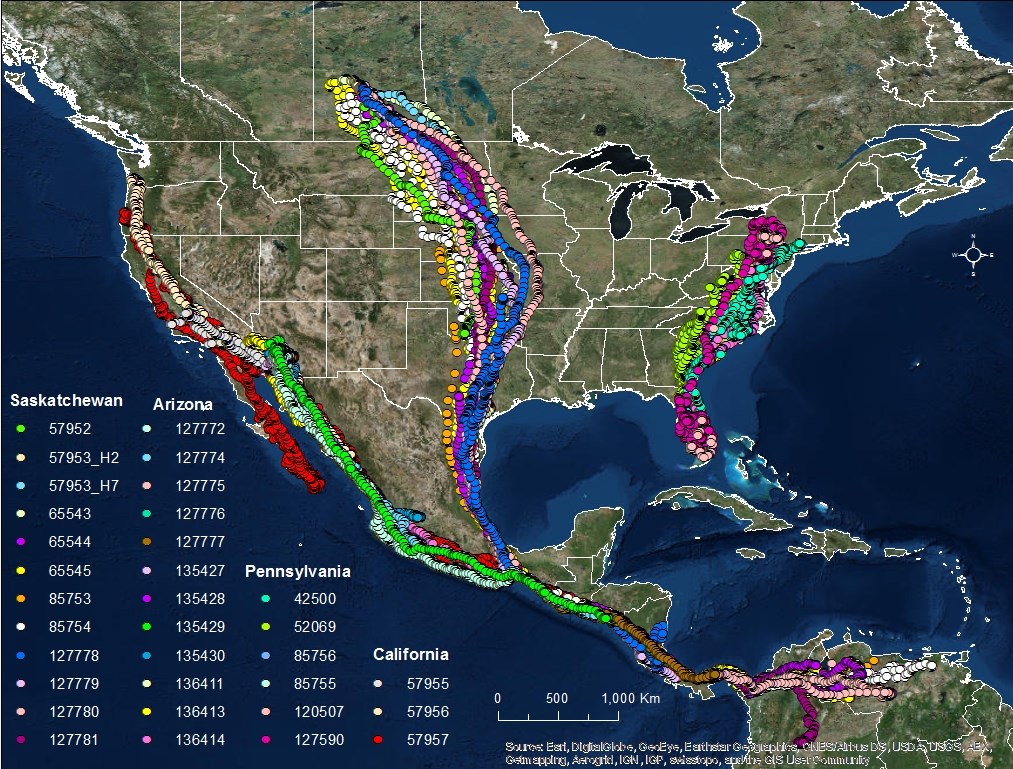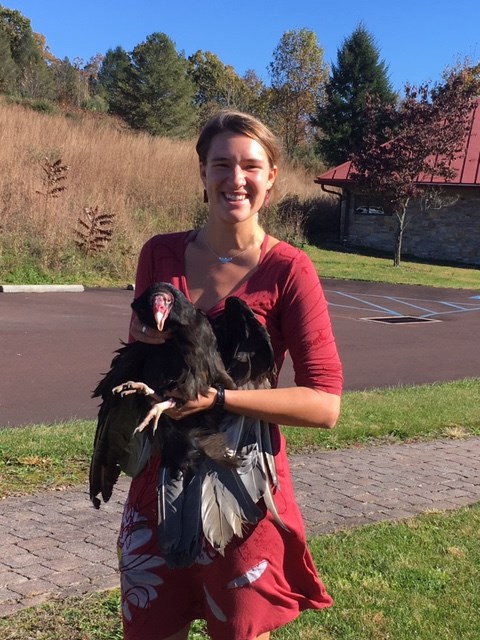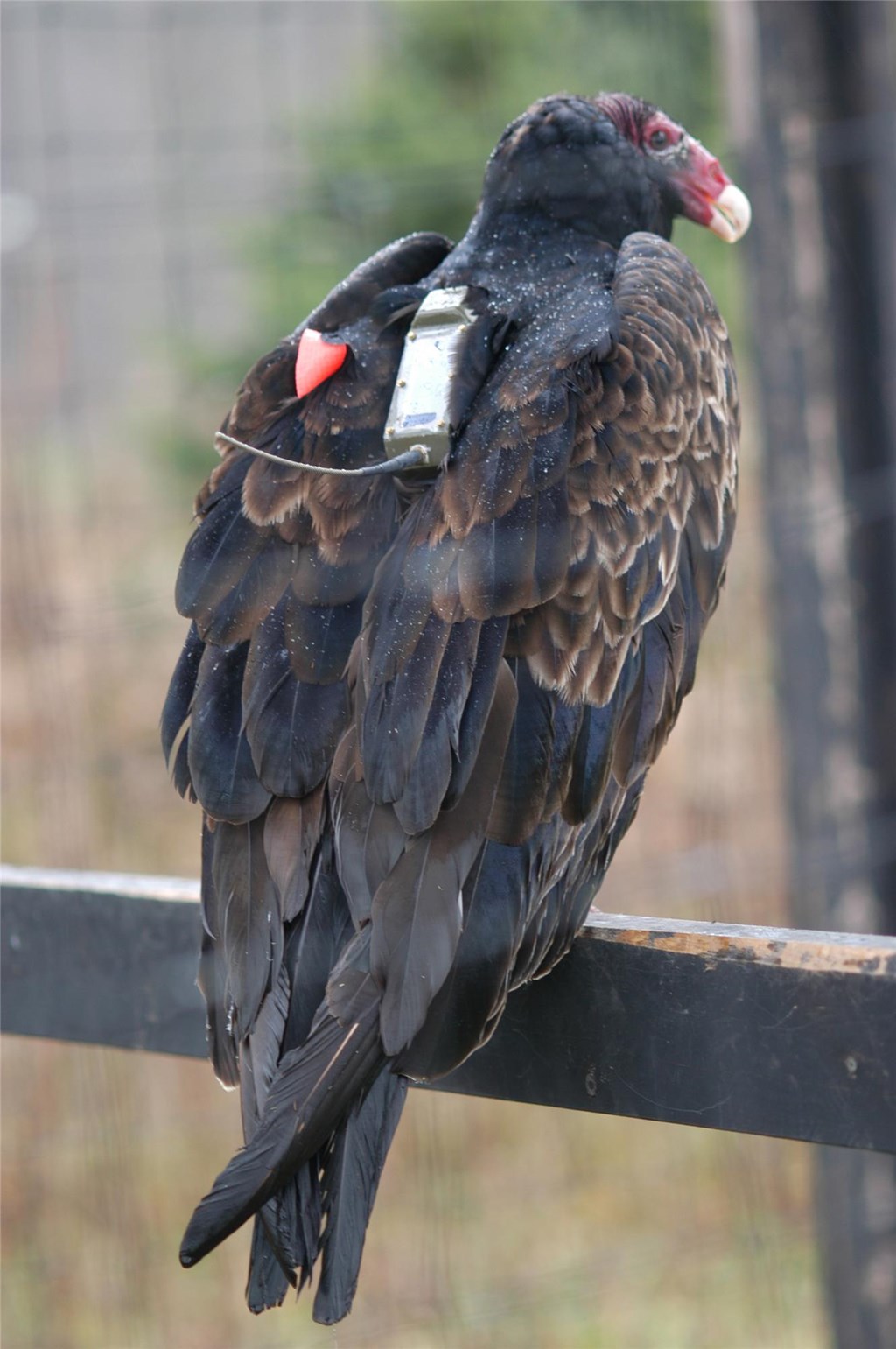Turkey Vulture Research

The turkey vulture is the most widely distributed, as well as the most abundant, of all scavenging birds of prey. The species, which occurs only in the New World, can be seen as far north as southern Canada and as far south as Tierra del Fuego at the southern tip of South America. Turkey vultures are considered partial migrants; northerly populations of the species migrate, whereas southern populations, in general, do not. Millions of migrating turkey vultures have been counted annually at migration watch sites in Mexico, Costa Rica, and Panama. However, despite their abundance, little is known about their short- and long-distance migratory movements.
Donate to Local-to-Global Vulture Research
Collaborative Work
We have been collaborating with several researchers throughout North and South America to better understand the movement ecology of turkey vultures. We have tagged over 400 turkey vultures in Venezuela using red, light blue, and yellow wing tags with the help of former Conservation Trainee, Adrian Nevada, and over 100 vultures with light blue wing tags in Pennsylvania. We also have tagged over 100 black vultures with yellow tags in Pennsylvania. We rely on citizen scientists to report sightings of wing-tagged vultures to map their movements.
In addition, we have worked with colleagues in Arizona, Washington, Minnesota, California, Argentina, and Canada to put satellite tracking devices on turkey vultures to study their long-distance movements. To date, we have tagged 74 turkey vultures with satellite trackers. These trackers allow us to follow their daily movements and map their long distance migrations, connecting the breeding and wintering grounds and identifying their migratory routes. Such data are critical when determining the causes of any potential population decline.
Population trends for turkey vultures can vary among populations and among locations within a population. For the United States, data are available through the Breeding Bird Survey or Christmas Bird Counts, but these data only cover the US and parts of Canada. To fill this data gap in vulture population trends, in 2005 Hawk Mountain instituted a series of 24 road surveys throughout the turkey vultures range in North, South and Central America. Surveys are conducted in the summer and winter and repeated every 10 to 15 years. To date we have conducted the initial summer and winter surveys and have begun conducting the second round of surveys. These surveys will for the first time allow us to monitor turkey vulture populations range-wide and to determine where our conservation efforts should be focused.

The Future
The next steps in this important work are to:
- Assess habitat use among populations during migration and on the wintering grounds
- Measure annual survival rate
- Conduct a genetic analysis of turkey vultures subspecies
- Examine juvenile mortality
- Assess nesting success and examine the characteristics of successful versus unsuccessful nests
- Continue roadside surveys of wintering and breeding vulture populations
Support
We are thankful for the support and assistance we have received over the years:
- The Acopian Family
- Wallace Research Fund
- Coastal Raptors
- Bloom Biological
- National Scientific and Technical Research Council, CONICET (Argentina)
- Dick Eales
To help support this important research, please contact Senior Research Biologist David Barber (570-943-3411 x105, [email protected]) or donate today using the button below. Be sure to include in the comments of the form that the online gift is for new world vulture research.





